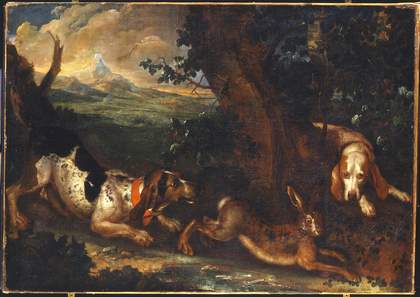
Fig.1
Attributed to James Hamilton
Two Hounds Chasing a Hare c.1700
Tate
T02266
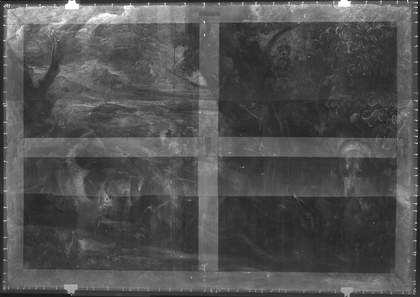
Fig.2
X-radiograph of Two Hounds Chasing a Hare c.1700
This painting is in oil paint on canvas, measuring 1105 x 1527 mm (fig.1). The support is composed of two pieces of plain woven linen canvas stitched together at a vertical join which passes through the eye of the hound on the left. The left-hand piece is 655mm wide and the right 918mm (fig.2). The join, which is rough but evenly stitched, seems to have been made using the same canvas threads as the painting support. The fabric of both sections is relatively coarse with threads of uneven thickness and distribution. The weave count of both sections is approximately the same, being 11 vertical and 12 or 13 horizontal threads per square centimetre.
The paintings’ original tacking edges have been removed except for a slender remnant about 10mm wide at the right turnover edge. There is some evidence of cusping along the bottom and right edges.1 The current stretcher appears to be contemporary with the lining, probably late nineteenth century. There is evidence for a previous stretcher or strainer in bar marks running across the top of the painting (29mm in from the canvas edge), on the left (45mm from the canvas edge), at the bottom (37mm from the canvas edge) and on the right (47mm from the canvas edge). There is also a cross bar mark, measuring approximately 35mm wide, running vertically down the middle of the painting. All of this suggests that little has been lost from the composition.
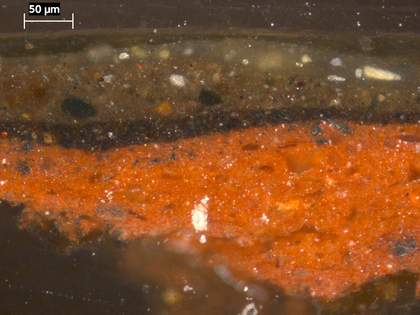
Fig.3
Cross-section taken from the green foreground underneath the dog, 297 mm from the left and 214 mm from the bottom, photographed at x260 magnification. From the bottom of the sample upwards: lower red ground, average thickness 160 microns; second coat of red ground, average thickness 30 microns; dark brown paint; dull greenish brown paint, possible applied when the underlying paint was still wet; later retouching; varnish
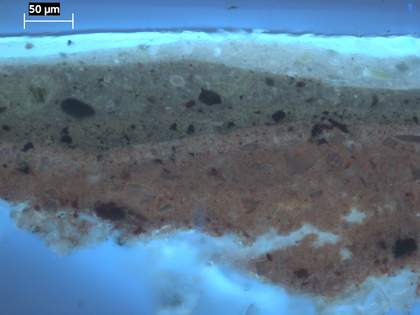
Fig.4
The same cross-section as in fig. 3, photographed at x260 magnification in ultraviolet light
The bright red ground is composed of two layers, probably bound in oil (figs.3–4). The first coat consists of red ochre and associated silicaceous material, with additions of glass, black, yellow ochre and lead white.2 This layer is coarser than the second coat and fills the coarse weave. The second, much thinner ground layer is also predominantly red ochre with silicon-rich glassy particles but has a much higher content of black and some cologne earth. The artist probably exploited this brightly coloured ground in the composition, especially for the glazes in the shadows, but the level of wear makes this difficult to gauge.

Fig.5
Infrared reflectogram of Two Hounds Chasing a Hare c.1700
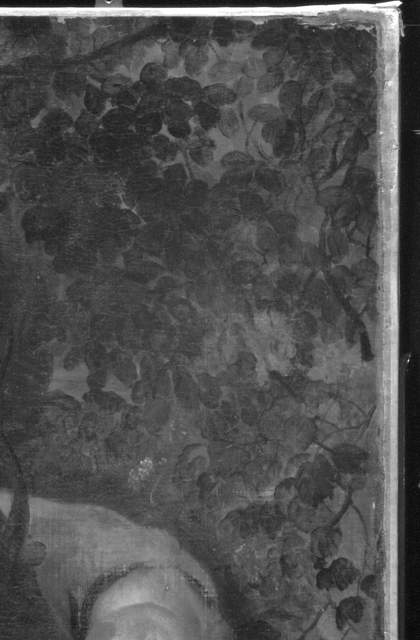
Fig.6
Infrared reflectogram detail of the top right corner of Two Hounds Chasing a Hare c.1700
Infrared reflectography suggested brushed underdrawing in black or brown paint (figs.5–6). The foliage and distant landscape appear to have been underpainted in opaque beige and grey paint, probably to give a cooler tone to the green leaves and blue, distant hills. No underpainting was detected elsewhere.
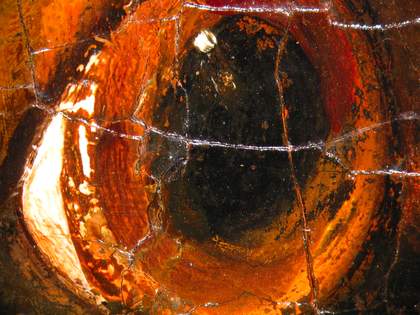
Fig.7
Photomicrograph at x8 magnification of the hound’s eye

Fig.8
Photomicrograph at x8 magnification of the fur on the hare’s nose
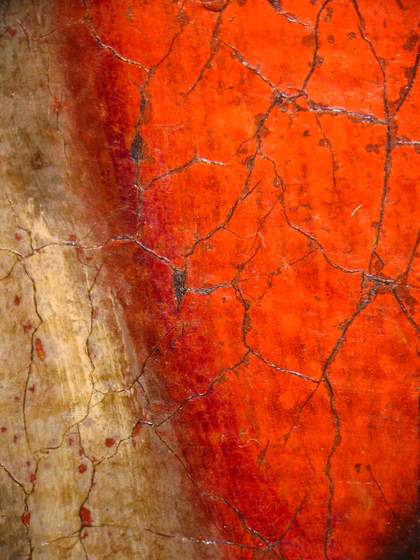
Fig.9
Photomicrograph at x8 magnification of faded red lake glazing on the hound’s collar
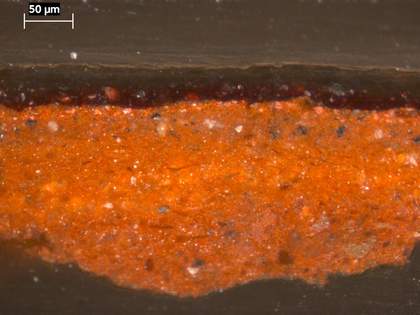
Fig.10
Cross-section taken from the hound’s red collar, 547mm from the left edge and 284mm from the bottom, photographed at x.260 magnification. From the bottom of the sample upwards: double red ground; very thin layer of opaque red paint of the collar; red lake glaze of the collar; varnish

Fig.11
The same cross-section as in fig.10, photographed at x260 magnification in ultraviolet light
The painting has suffered a great deal of abrasion from overcleaning in the past. This is most apparent in the sky, on the join and in the shadows. Due to the high level of wear and two extensive campaigns of much later retouching, it is very difficult to assess the development and manner of execution of the composition. However, it is possible to say that clear reserves were left for all the principal compositional elements, as shown in the X-radiograph (fig.2). The animals were painted mostly wet-in-wet in a single layer with minor additions in low impasto and translucent glazes (figs.7–11). Most of the clouds go over the sky paint.
The palette includes verdigris, green earth, smalt, indigo, red ochre, vermilion, red lake, yellow ochre and cologne earth. Chalk, pipeclay and ground glass were also found in many of the colour mixtures to modify and extend the paint.
March 2020
